

Welcome to the Tec Corp Stone Inc. Shop! Explore our extensive selection of premium stones, from elegant marble to durable granite. Whether you’re planning a renovation or a new build, find the perfect materials to elevate your space. Shop now for high-quality stones and bring your design dreams to life.
Stone is one of the oldest materials that was used for countertops and it still maintains its popularity with many differences compared to other materials. Stone is a luxury material that its use in the interior of the house, office environments, restaurants and hotels gives a new and indescribable effect to the environment in terms of quality and charm. At Tec Corp Stone Inc., we believe that your project should be kept as simple and straightforward as possible, regardless how complex the task may seem. We offer a broad range of stone, including: Quartz, Quartzite, Granite, Porcelain, Marble, Onyx, soapstone. We will leave no stone unturned until we make our customer happy!
Showing 1–12 of 258 results
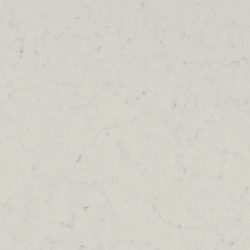
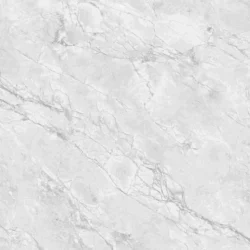
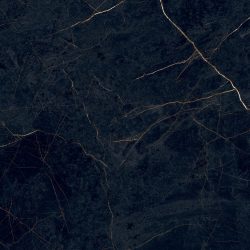
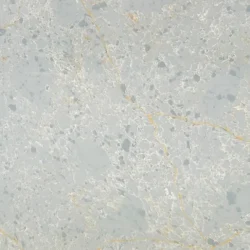
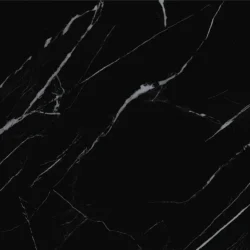

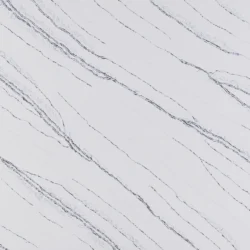


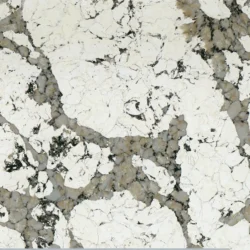
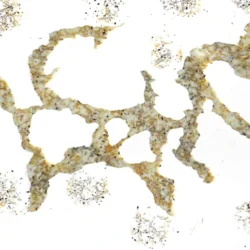
Marble is one of the most iconic and luxurious natural stones, widely used in architecture, sculpture, and interior design for centuries. Known for its elegant veining, smooth texture, and timeless appeal, marble has been a symbol of wealth, sophistication, and artistic excellence across different cultures.
Marble is a metamorphic rock formed from limestone subjected to extreme heat and pressure over millions of years. This process recrystallizes calcite, creating a dense, fine-grained stone with its characteristic veining. The veins are formed due to mineral impurities, such as iron, graphite, or clay, resulting in various colors and patterns.
Marble has been highly valued since ancient times for its beauty and durability. Some of the most famous historical uses include:
Marble is a natural metamorphic rock that possesses a combination of aesthetic beauty and unique physical characteristics, making it a popular choice for architecture, sculpture, and interior design. However, its softness and porosity require special care compared to harder stones like granite or quartzite. Below, we explore the key physical and chemical properties that define marble.
Composition & Hardness
Why It Matters: Marble is softer than quartz or granite, making it easier to carve and shape but also more prone to scratching and chipping.
Porosity & Water Absorption
Why It Matters: Regular sealing is essential to protect marble surfaces from staining and etching.
Veining & Color Variations
Color range:
Why It Matters: Each slab of marble is unique, which adds exclusivity to every project but may require careful slab selection for consistency.
Reactivity to Acids & Chemicals
Why It Matters: Avoid using acidic cleaners or exposing marble to acidic foods and drinks to prevent surface damage.
Heat Resistance
Why It Matters: While marble can withstand heat, using trivets and coasters is still recommended to protect the surface.
Durability & Longevity
Why It Matters: While marble is not as hard as granite, its timeless beauty and ability to develop character over time make it a preferred choice for luxury interiors.
Marble is one of the most versatile and luxurious natural stones, used in high-end residential and commercial projects worldwide. Its elegant appearance, smooth texture, and unique veining make it a favorite for both classic and contemporary designs. Below, we explore the top applications of marble in interior design and construction.
Trend Alert: Honed (matte) finishes are becoming more popular than polished marble in modern kitchens to reduce visible etching.
Tip: Using large slabs instead of tiles creates a seamless, high-end look.
Considerations: Marble floors can be slippery when polished, so honed or textured finishes are recommended for high-traffic areas.
Trend Alert: Backlit marble walls are becoming a trend in high-end restaurants, hotels, and penthouses.
Tip: Combining marble with metal (gold, brass, or stainless steel) creates a modern, elegant contrast.
Tip: If using marble outdoors, choose a honed or textured finish for better slip resistance and durability.
Example: The Taj Mahal, The Pantheon, and The Lincoln Memorial are some of the most famous architectural landmarks made of marble.
Marble is one of the most luxurious and elegant natural stones, widely used in architecture, interior design, and high-end construction. However, despite its beauty, it has both advantages and disadvantages that should be considered before choosing it for a project. Below is a detailed breakdown of the pros and cons of marble.
Best For: Homeowners and designers who want a high-end, classic, and luxurious look.
Tip: If consistency in pattern is important, carefully select matching slabs before installation.
Warning: While heat-resistant, marble can still crack due to thermal shock, so always use trivets and heat pads.
Best For: Homeowners looking to add long-term value to their property.
Trending: Honed finishes are becoming more popular due to their lower visibility of etching and scratches.
Solution: Applying a quality sealant every 6-12 months can help reduce porosity and staining risks.
Solution:
Estimated Costs in Canada:
Solution: Use anti-slip coatings or honed/textured finishes in high-traffic areas.
Solution: Use denser marble varieties and ensure proper sealing for outdoor installations.
✔ Best For:
✖ Not Ideal For:
Choosing the right stone for your home or commercial project involves comparing different materials based on durability, maintenance, cost, and aesthetics. While marble is a classic choice, alternatives like granite, quartz, porcelain, quartzite, and onyx offer their own unique advantages. Below is a detailed comparison of marble against these popular stone options.
| Feature | Marble | Granite |
| Durability | Softer, prone to scratches and etching (Mohs 3-4) | Harder, more scratch-resistant (Mohs 6-7) |
| Porosity | High – requires sealing to prevent stains | Lower – more resistant to stains and moisture |
| Heat Resistance | Good, but thermal shock can cause cracks | Excellent – withstands high temperatures |
| Maintenance | Requires regular sealing and gentle cleaning | Lower maintenance, occasional sealing needed |
| Appearance | Elegant, unique veining, softer look | Bold, speckled patterns, high durability |
| Cost (per sq.ft.) | $80 – $500 (luxury options) | $50 – $250 (generally more affordable) |
Best for: Marble suits luxury bathrooms, decorative elements, and low-traffic kitchens, while granite is ideal for busy kitchens and commercial areas due to its durability.
| Feature | Marble | Quartz |
| Durability | Softer, can chip and scratch easily | Extremely durable and non-porous |
| Porosity | Highly porous, needs sealing | Non-porous – resistant to stains |
| Heat Resistance | Can withstand heat but may etch | Heat-resistant but can scorch under extreme heat |
| Maintenance | Requires frequent sealing and care | Very low maintenance – no sealing required |
| Appearance | Natural, unique veining | Engineered – available in marble-like designs |
| Cost (per sq.ft.) | $80 – $500 | $60 – $200 |
Best for: Quartz is perfect for low-maintenance, high-traffic kitchens, while marble is better for luxury designs where natural beauty is prioritized.
| Feature | Marble | Porcelain |
| Durability | Can scratch and chip | Highly durable and scratch-resistant |
| Porosity | High – absorbs stains if unsealed | Non-porous – stain-resistant |
| Heat Resistance | Good, but can suffer thermal shock | Excellent – withstands extreme heat |
| Maintenance | Requires sealing and careful cleaning | Very low maintenance, easy to clean |
| Appearance | Natural stone, unique veining | Man-made, available in marble-look designs |
| Cost (per sq.ft.) | $80 – $500 | $50 – $150 |
Best for: Porcelain is ideal for budget-conscious homeowners wanting a marble look with minimal maintenance, while marble is best for authentic, high-end luxury interiors.
| Feature | Marble | Quartzite |
| Durability | Soft, prone to etching and scratches | Harder than marble, resists etching |
| Porosity | High – needs frequent sealing | Less porous but still requires sealing |
| Heat Resistance | Can withstand moderate heat | Excellent heat resistance |
| Maintenance | High – requires sealing & careful cleaning | Moderate – occasional sealing needed |
| Appearance | Soft, natural veining | Similar to marble but more durable |
| Cost (per sq.ft.) | $80 – $500 | $100 – $250 |
Best for: Quartzite is a great alternative for those who love the look of marble but want a more durable surface.
| Feature | Marble | Onyx |
| Durability | Softer than granite and quartz | Extremely fragile and delicate |
| Porosity | High – needs regular sealing | Very high – absorbs stains easily |
| Heat Resistance | Good, but prone to etching | Moderate – can discolor under high heat |
| Maintenance | Requires frequent care and sealing | High maintenance – prone to scratches |
| Appearance | Natural veining, classic luxury | Exotic, translucent appearance |
| Cost (per sq.ft.) | $80 – $500 | $150 – $600 |
Best for: Onyx is best for decorative features like backlit walls and accent pieces, while marble is more versatile for functional surfaces.
✔ Choose Marble if:
✔ Choose Granite if:
✔ Choose Quartz if:
✔ Choose Porcelain if:
✔ Choose Quartzite if:
✔ Choose Onyx if:
Marble is considered one of the most luxurious and elegant natural stones, but it comes with a wide price range depending on the type, quality, and installation process. Below, we break down marble costs in Canada, including material prices, installation fees, and factors affecting pricing.
The price of marble varies significantly based on the rarity, quality, and origin of the stone. Here’s an estimated breakdown of marble slab costs in Canada:
| Marble Type | Price per Sq.Ft.(CAD) | Notes |
| Carrara Marble | $80 – $150 | Most affordable white marble, soft gray veining |
| Calacatta Marble | $150 – $500+ | High-end, rare, bolder veining |
| Statuario Marble | $200 – $600+ | Luxurious, bright white with strong veining |
| Emperador Marble | $100 – $300 | Brown and golden tones, elegant for flooring |
| Crema Marfil Marble | $80 – $200 | Beige-toned, common for interiors |
| Black Marble (Nero Marquina) | $120 – $400 | Deep black with white veining |
| Onyx Marble | $200 – $600+ | Exotic, translucent, best for decorative use |
Key Takeaway:
The installation cost of marble depends on the complexity of the project, labor fees, and finishing options. Here’s an estimated breakdown:
| Installation Type | Cost per Sq. Ft. (CAD) | Details |
| Basic Marble Countertop Installation | $50 – $120 | Includes cutting and sealing |
| Custom Countertop with Edge Finishing | $120 – $250 | Detailed edges, cutouts, and premium finishes |
| Marble Flooring Installation | $30 – $80 | Professional tiling, grout, and sealing |
| Marble Backsplash Installation | $50 – $150 | Includes smaller slab cutting and setting |
| Wall Cladding & Feature Walls | $100 – $300 | Requires skilled labor, seamless designs |
| Marble Fireplace Surround | $500 – $3,000+ | Custom-cut designs, luxury finish |
Key Takeaways:
✔ Best Investment If:
✖ Not Ideal If:
Marble is a timeless and elegant stone, but it requires proper care and maintenance to keep its beauty intact. Since it’s a porous and relatively soft material, it can be prone to scratches, stains, and etching if not properly maintained. Below are essential tips on cleaning, sealing, and protecting marble surfaces to ensure longevity.
Use pH-Neutral Cleaners
Use a Soft Cloth or Microfiber
Wipe Up Spills Immediately
Dust & Dry Mop Regularly
Since marble is porous, sealing is essential to prevent stains and water damage.
How Often Should You Seal Marble?
How to Check If Your Marble Needs Sealing?
Best Type of Marble Sealers:
Tip: Always clean and dry the surface before applying a new sealant for the best results!
Use Coasters & Trivets
Avoid Abrasive Cleaning Tools
Use Cutting Boards
Protect High-Traffic Areas
How to Remove Water Stains?
How to Remove Oil-Based Stains (Grease, Makeup, Lotion)?
How to Remove Acidic Etching (Lemon, Wine, Vinegar)?
How to Remove Rust Stains?
Marble is not completely maintenance-free, but with the right care, it can last a lifetime.
If you seal it regularly, clean it properly, and take preventive measures, it remains stunning for decades.
Marble has remained a timeless luxury material in Canada, but its popularity and applications have evolved with modern design trends. From high-end kitchen countertops to statement bathroom walls, Canadians continue to embrace marble in both residential and commercial spaces. Below, we explore the latest marble trends, color preferences, and its demand in the Canadian market.
Luxury & Elegance: Marble is synonymous with high-end aesthetics, making it a top choice for premium homes and commercial spaces.
Natural Beauty: Each slab is unique, offering one-of-a-kind veining patterns and textures.
Versatility: Works for countertops, floors, backsplashes, feature walls, fireplaces, and even furniture.
Resale Value: Homes with marble installations tend to increase in property value, making it a solid investment.
While white marble has traditionally been the most sought-after, recent trends show a growing interest in bold and unique colors. Here are the most in-demand marble types:
| Marble Type | Color & Veining | Best Used For |
| Calacatta Marble | Bright white, bold gray veins | Luxury countertops, statement walls |
| Carrara Marble | Soft white, subtle gray veins | Affordable countertops, floors |
| Statuario Marble | Pure white, dramatic veining | High-end kitchens & vanities |
| Nero Marquina | Deep black, white veins | Modern bathrooms & fireplace surrounds |
| Emperador Marble | Rich brown, golden veins | Cozy, warm interior designs |
| Green Marble (Verde Alpi, Rainforest Green) | Deep green, earthy veins | Bold accent walls & spa-like bathrooms |
| Pink & Rose Marble | Soft pink, elegant swirls | Luxury retail stores & feminine spaces |
Key Takeaways:
Luxury Kitchens – White marble countertops and waterfall islands dominate high-end home designs.
Spa-Like Bathrooms – Heated marble floors and sleek showers add a touch of opulence.
Feature Walls & Fireplaces – Bold marble slabs replace traditional paint or wallpaper.
Commercial Spaces – High-end hotels, retail stores, and office buildings use marble for elegant lobbies and reception areas.
2024 Trend: “Bookmatched marble” (mirrored vein patterns on adjacent slabs) is gaining massive popularity in high-end spaces!
✔ Yes! Marble remains a premium material that adds long-term value to homes.
Resale potential: Homes with marble kitchens, bathrooms, or fireplaces attract more buyers.
Design flexibility: Marble can blend with modern, classic, and minimalist interiors.
✖ Considerations:
If you love natural beauty, timeless luxury, and unique veining, marble is an excellent choice. While it requires careful maintenance, its prestige and elegance make it worth the investment.
Marble is a luxurious and timeless stone, but selecting the right type, finish, and thickness is crucial to ensure it meets your needs. Whether you’re choosing marble for a kitchen countertop, bathroom vanity, flooring, or fireplace, here are the most important factors to consider before making your investment.
Marble comes in a variety of colors and veining patterns, each with its own aesthetic appeal and price range.
White Marble (Classic & Elegant)
Dark & Bold Marble (Modern & Dramatic)
Exotic Colors (Unique & Trendy)
Tip: Lighter marbles make spaces look bigger and brighter, while darker marbles add depth and luxury.
The finish of your marble surface affects both aesthetics and durability.
| Finish Type | Look & Feel | Best For | Pros | Cons |
| Polished | Glossy, reflective | High-end kitchens, bathrooms | Enhances veining, elegant, stain-resistant | Scratches are more visible |
| Honed | Matte, smooth | High-traffic areas, flooring | Soft, natural look, hides scratches | More porous, needs sealing |
| Leathered | Textured, slightly rough | Feature walls, modern countertops | Unique texture, hides fingerprints | Less common, higher cost |
Tip: If you prefer a low-maintenance surface, honed or leathered finishes are better at concealing scratches and etching.
Slabs – Best for countertops, seamless walls, high-end projects.
Tiles – Budget-friendly, easier to install, best for flooring and backsplashes.
Tip: If you want a luxury, seamless look, choose large slabs with bookmatching for dramatic veining.
Marble slabs come in two main thicknesses, and the right choice depends on the application.
2cm Marble Slabs (¾ inch)
3cm Marble Slabs (1¼ inch)
Tip: If you want a bold, thicker marble look, you can opt for mitered edges, which create the illusion of a thicker slab.
Tip: For high-traffic kitchens, opt for Carrara marble with a honed finish to reduce visible wear.
Tip: If you’re on a budget but want a marble look, consider marble-look quartz or porcelain slabs as alternatives.
Choose Marble If:
✔ You love luxury and natural beauty.
✔ You’re okay with regular sealing and maintenance.
✔ You want a high-end, timeless investment for your home.
Consider Other Materials If:
✖ You want a stain-proof, low-maintenance surface (opt for quartz or porcelain).
✖ Your kitchen has heavy traffic and frequent spills (granite or quartzite might be better).

At Tec Corp Stone Inc., we pride ourselves on delivering exceptional craftsmanship and unmatched quality. With years of experience in stone fabrication, our dedicated team ensures every project is executed with precision and care. We offer personalized service, innovative solutions, and a commitment to customer satisfaction. Choose us for your stone needs and experience the Tec Corp Stone Inc. difference.